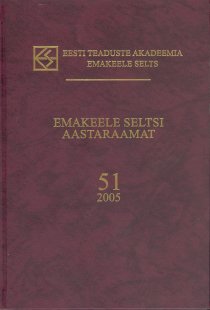Impersonaliseeritud impersonaal kui konstruktsioonitasandi grammatisatsioon
Impersonalised impersonals: construction-level grammaticalisation
Author(s): Virve-Anneli VihmanSubject(s): Language and Literature Studies
Published by: Teaduste Akadeemia Kirjastus
Keywords: voice; impersonal; passive; semantic bleaching; grammaticalization
Summary/Abstract: This paper examines a seemingly anomolous construction in the voice system of Estonian. The construction is judged grammatical by native speakers but appears to express more arguments in the syntactic structure than are available in the logical structure. The construction in question, here dubbed the ‘impersonalised impersonal’, is related to both the personal passive and the impersonal, but is located at the margins of the grammar of the language. Where the impersonal perfect takes a non-agreeing, default 3sg auxiliary, the impersonalised impersonal adds an impersonal affix to the auxiliary. This gives the impression of an impersonal argument having been added to a construction in which all argument positions are filled. After examining possible analyses of the construction by way of argument structure, I conclude that the additional impersonal affix does not in fact add an additional argument, but is rather used for concord with the past passive participle. It is only the participle which carries information about the presence of an actor in the impersonal perfect. Because of the formal syncretism between the functionally distinct agentive impersonal perfect and the non-agentive passive, this paper argues that the impersonal construction has undergone a partial process of construction-level grammaticalisation, thereby becoming semantically bleached of its actor argument. The impersonalised impersonal constitutes an attempt to reestablish an actor in the impersonal perfect while preserving information about tense and perfectivity. The impersonal affix on the auxiliary functions as a form of agreement with the passive participle, reinforcing the otherwise weakened presence of the implicit impersonal actor.
Journal: Emakeele Seltsi aastaraamat
- Issue Year: 2006
- Issue No: 52
- Page Range: 158-178
- Page Count: 21
- Language: Estonian

